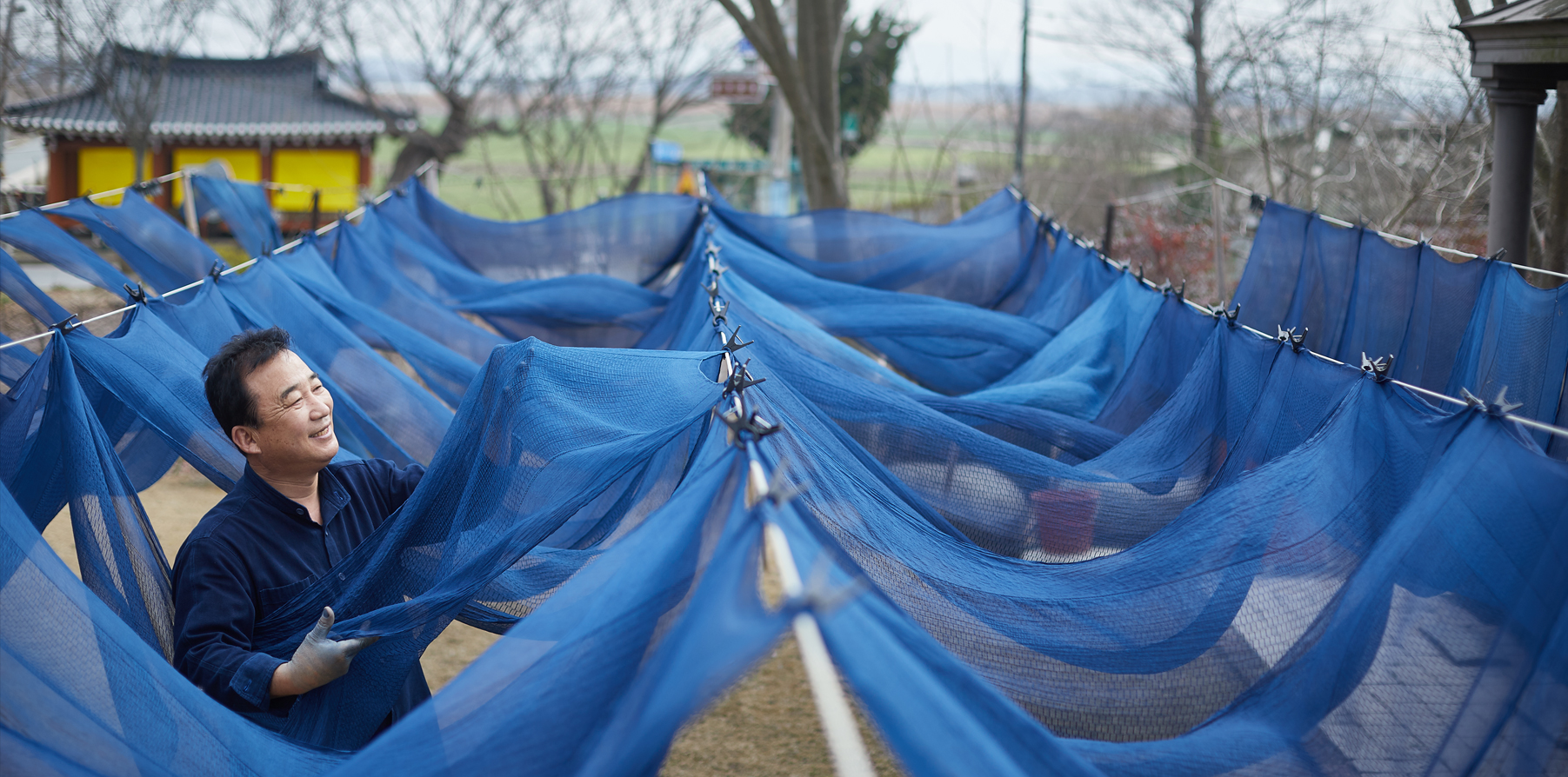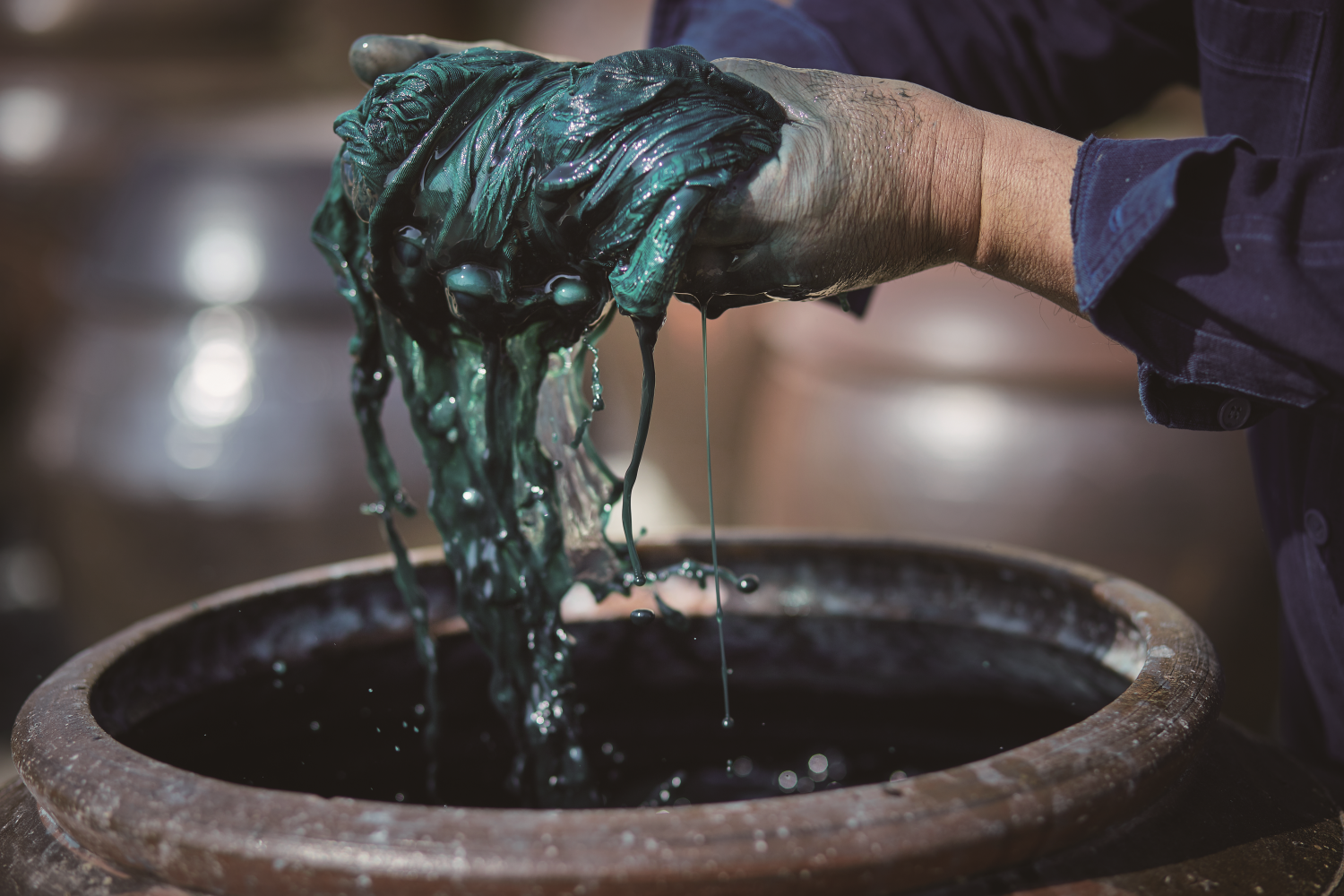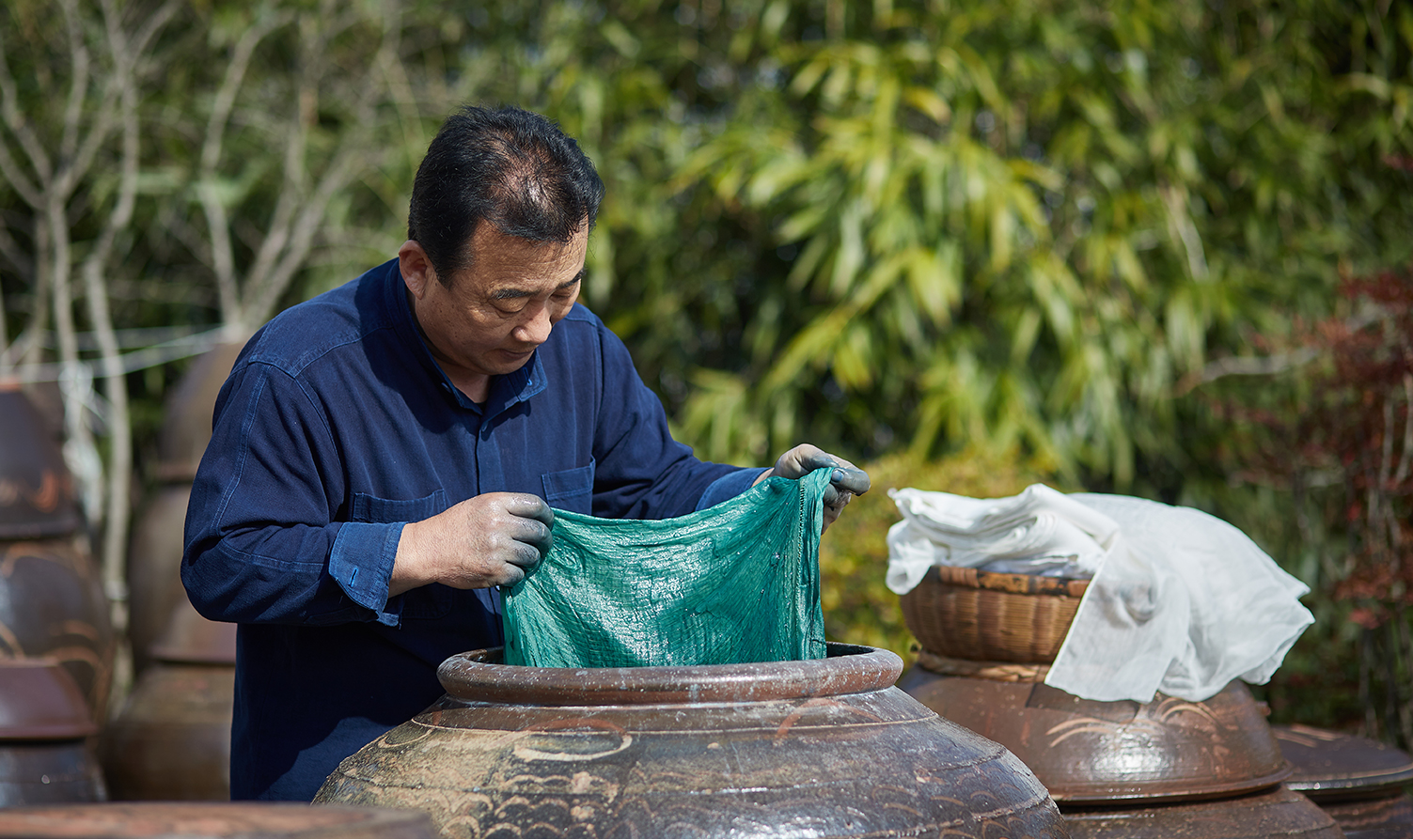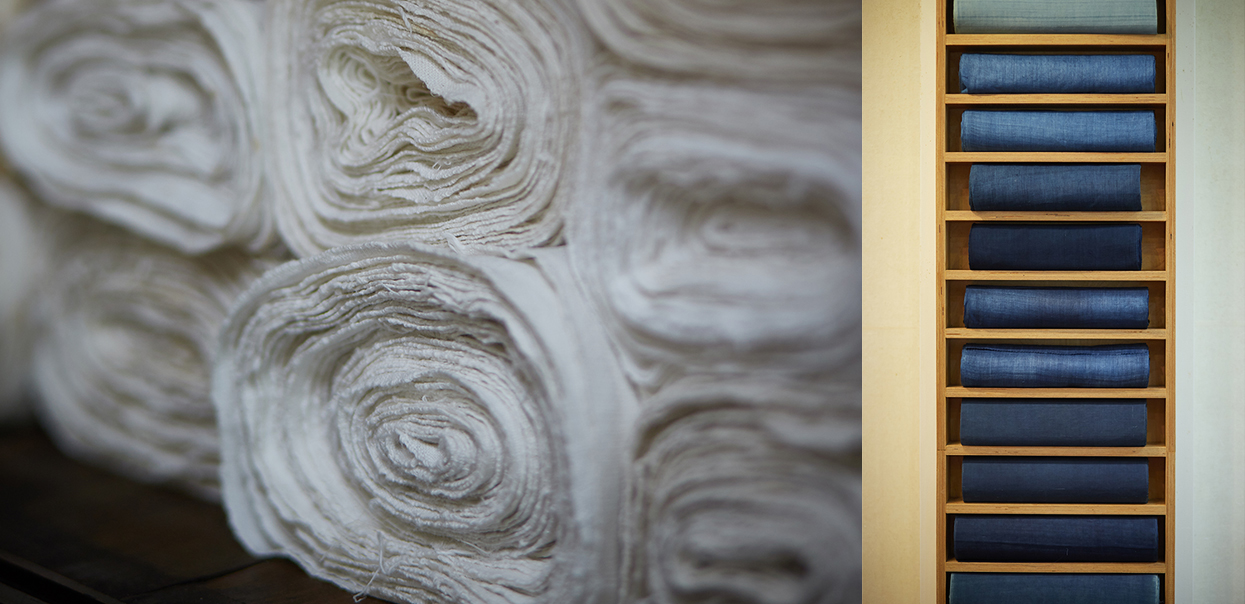- 한국어
- English
- 日本語
- 中文
- العربية
- Español
- Français
- Deutsch
- Pусский
- Tiếng Việt
- Indonesian
|
Monthly KOREA’s March 2020 issue. ▶Link to Webzine |
Reviving Precious Craft
Indigo blue explores the bottomless depths of nature and gives off an unmatched aura of royalty. This hue, which had been lost in modern Korean art after more than two millennia as the epitome of natural dye, is seeing a revival thanks to dye master Jung Kwan Chae.
Written by Kim Samuel Photographed by Studio Kenn

The oldest tales of ancient Korea cite “indigo adornments worn by the Goguryeo king.” This influential shade was often associated with royalty, and per its root term, “indigo” originated from India. It was transported across trade routes cutting through ancient Egypt, Greece and the Middle East and then passed China before reaching the Korean Peninsula. Blue-shaded clothing mentioned in ancient literature on Korea was all dyed in indigo. The royal palaces of the Goryeo and Joseon dynasties even had internal infrastructure for manufacturing and applying dye materials. And the earlier Silla Dynasty period even kept a storage system for dye maintenance.
Dye master Jung Kwan Chae, designated National Intangible Cultural Heritage No. 115 by the Korean government, grew up in Saetgol Village nestled in the cotton-farming fields of Naju, Jeollanam-do Province. In accordance with the regional produce, dye and weaving developed to supplement high-quality cotton. The durability of indigo’s roots allow it to flourish even in flood-prone terrain like the Yeongsangang River. The success of Naju’s indigo harvest stimulated the regional economy, but the outbreak of the Korean War in 1950 suspended the supply of indigo. “I vividly recall all sorts of senses and textures of indigo from my childhood. One day, I could no longer access it. Suspending the harvest even for just a year made it difficult to obtain seeds from then on,” Jung said.
Dye Another Day

The master craftsman’s hands are stained in blue while he performs the dyeing process.
In the late 1970s, Jung crossed paths with indigo in a strikingly fateful encounter. Ye Yong-hae, a reporter for the daily Hankook Ilbo, was on the lookout for an exemplary case of a term he newly coined — “living national treasure” — when Jung was a 20-year-old art student. In Jung’s freshman year in college, Ye gave him an indigo seed in the hope of reviving the traditional practice of dyeing. Having witnessed his mother and grandmother’s daily duties of dyeing and harvesting indigo, Jung was a fitting heir to this important duty. In 1984, Jung greatly impressed Ye by presenting an indigo-dyed fabric. Bolstered by the reporter’s heartfelt encouragement, Jung kept up the annual harvest while keeping his day job as a high school art teacher. Back then, the concepts of “organic” or “eco” were not in vogue but the youthful Jung diligently practiced all of his daily, seasonal and annual duties.
Beautiful hues require an arduous and lengthy process. The seeds are sown in spring and later transferred to the fields in April and May, after which several rounds of weeding follow. In the sweltering heat of July, leaves are harvested and timing is crucial since nutrients are retained only during peak summer. “Dyeing the fabric accounts for not even a tenth of the entire process. Growing, harvesting and extracting the dye material from indigo require a lot of toil and is entirely subject to nature’s temperament,” Jung said.

Jung Kwan Chae checks his work of indigo-saturated fabric.
Capturing Natural Hues
Today, indigo is the only category applicable for designation as a living national treasure. This recognition not only considers the revival of the dyeing tradition, but also the grueling effort required to reap its beautiful hue. Various tints of blue comprise indigo. “Indeed, indigo is considered the most difficult natural hue to reproduce. Chemically imbued colors are straightforward, while naturally sourced shades have an elusive and distinguishable depth to them. Fancy hues tire the eye but stable and deeply nuanced hues give peace of mind,” Jung said.
The process of making fermented indigo dye starts with slicing the indigo to put into a jar, and then replacing the indigo with lime backed with oyster shells. When the lime is added, the pigment deposits settle downward. The top liquid can be discarded, leaving sediments at the bottom to solidify. When lye is added to the indigo sediment and fermented for seven to 10 days, the pigment and lime separate and form bubbles. Also called “flower liquidization,” this process shows color shifts at various points. Dyeing in the liquid initially yields light green hues, which switch to turquoise-tinted blue after being left to dry. After at least eight repetitions, the deepest shade of navy is produced.

At Saetgol Village in Naju, Jeollanam-do Province, knots of cotton await the expert hands of dye master Jung Kwan Chae. / Indigo hues appear in various gradients.
None of these unique skills can be learned simply by mastering pure techniques and even machines are limited in their ability to produce the works of masters. For these reasons, Jung offers free training to those seeking to obtain his skills. Though his works are not for sale at offline stores, he offers his services directly upon direct request. The spirit of his hard and honest work is transmitted through his dyes. “Passing along nature’s pure shade of indigo to future generations is more important to me than any fame or recognition. Capturing and preserving the essence of indigo’s beauty is all I wish for,” he said.

Indigo is bio-friendly enough to be applied to baby clothes, and even has anti-bacterial effects.